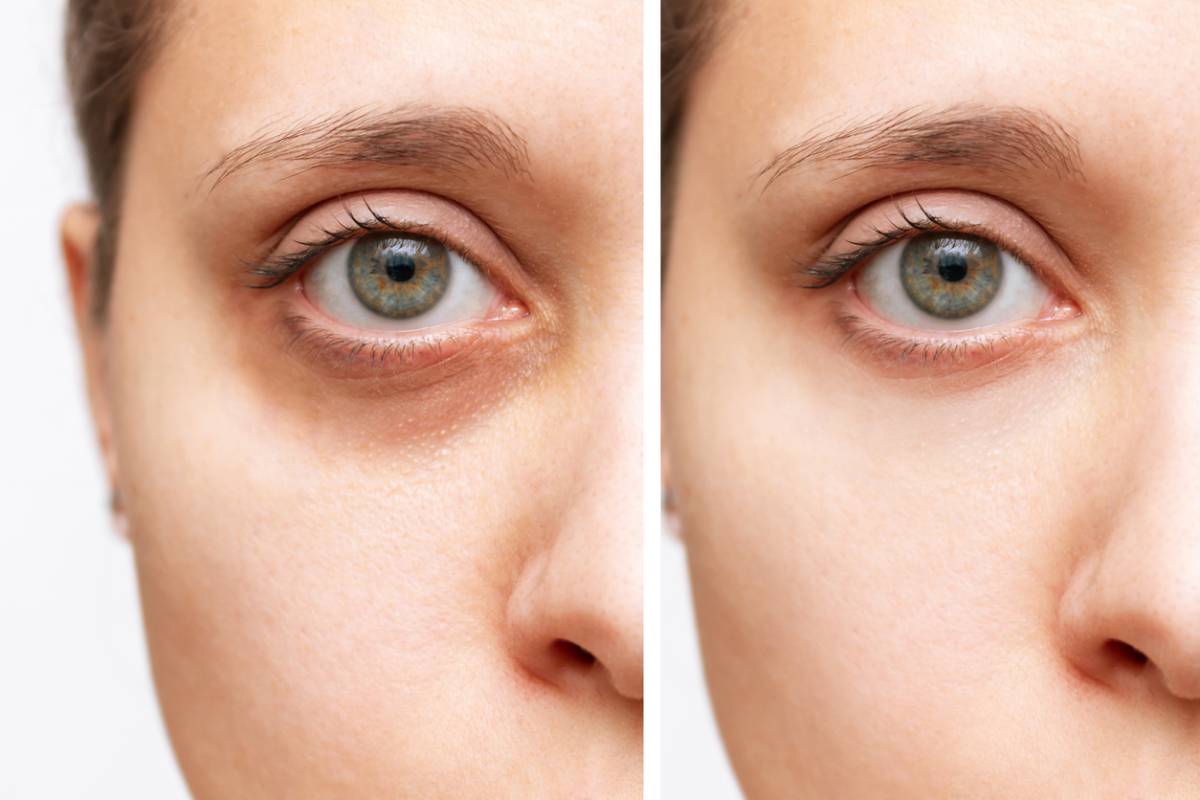Dark circles under the eyes are a common cosmetic concern that can affect people of all ages and skin types. They might develop as a result of stress or grow naturally due to genetic makeup. While often not a serious medical condition, persistent dark circles can cause self-consciousness and impact one’s confidence. Understanding the underlying causes of under-eye bags and knowing when to seek treatment for dark circles can help you achieve a refreshed, youthful appearance. But what about when to seek treatment for dark circles.
When to Seek Treatment for Dark Circles
Below, your eyelid surgery specialists in the Inland Empire will go into detail about dark circles, how they develop, and the best treatments available to you right away.
How Do Under-Eye Circles Form?
You may have been struggling with dark circles under your eyes for months or even years. Or, it is something you are just starting to notice. This condition can come about for a myriad of reasons, so it is a good idea to work with your doctor and find out exactly how yours developed. Possible reasons include:
Genetics:
Genetics play a significant role in determining an individual’s susceptibility to dark circles. Some people inherit thin skin and a tendency for blood vessels to be more visible beneath the eyes, leading to a perpetually darkened appearance.
Fatigue and Lack of Sleep:
Sleep deprivation or poor sleep quality can result in dark circles under the eyes. When we don’t get enough rest, blood vessels dilate, causing the skin under the eyes to appear darker and more prominent.
Aging:
As we age, the skin around the eyes becomes thinner and loses elasticity, making blood vessels more visible. Additionally, the natural fat pads that cushion the eyes can shift or diminish with age, creating hollows and shadows that contribute to the appearance of dark circles.
Sun Exposure:
Prolonged exposure to sunlight can cause the skin to produce more melanin, the pigment responsible for skin coloration. Excessive sun exposure can darken the skin under the eyes, making dark circles more noticeable.
While occasional dark circles may not warrant medical intervention, persistent or severe dark circles may indicate an underlying issue that requires treatment.
What Do Under-Eye Circles Look Like?
Symptoms of under-eye circles can range from mild to severe. You may already be dealing with these symptoms daily. They may not have appeared yet, but it is good to keep an eye out for these conditions no matter what:
Persistent Blemishes:
If dark circles persist despite lifestyle changes such as getting adequate sleep, hydrating, and using topical treatments, it may be time to consult a dermatologist or cosmetic surgeon.
Underlying Health Conditions:
Dark circles can sometimes be a symptom of an underlying health condition such as allergies, thyroid disorders, or vitamin deficiencies. If you experience other symptoms alongside dark circles, such as fatigue, puffiness, or changes in vision, consult a healthcare professional for a thorough evaluation.
Impact on Quality of Life:
If dark circles affect your self-esteem, confidence, or daily functioning, seeking treatment may be beneficial. Addressing cosmetic concerns can help improve overall well-being and quality of life.
How to Treat Dark Under-Eye Circles
Over-the-counter creams, gels, and serums containing ingredients such as retinol, vitamin C, hyaluronic acid, and caffeine can help reduce the appearance of dark circles by hydrating the skin, promoting collagen production, and improving circulation. Prescription-strength formulations may be recommended for more severe cases.
Injectable fillers such as hyaluronic acid-based dermal fillers are also an option. They can be used to fill hollows and volumize the under-eye area, reducing the appearance of dark circles and restoring a youthful contour.
Why We Recommend Under-Eye Surgery
The most popular and highly recommended option is to opt for lower lid lift. Eyelid surgery can sound daunting, but it is incredibly efficient and beneficial. Lower eyelid surgery is a surgical procedure that involves removing excess skin, fat, and tissue from the lower eyelids to reduce puffiness, tighten lax skin, and improve the overall appearance of the under-eye area. Lower blepharoplasty can address dark circles caused by fat protrusion, skin laxity, and hollowing, providing long-lasting results and a more youthful eye contour.
Combined Blepharoplasty Options
Combined Blepharoplasty: In cases where both upper and lower eyelids exhibit signs of aging, combined blepharoplasty may be recommended. This comprehensive approach involves addressing both upper and lower eyelid concerns simultaneously to achieve harmonious rejuvenation of the entire eye area.
Get Relief from Dark Under-Eye Circles Today
Dark circles are a natural part of aging and growing older. That does not mean you have to deal with the symptoms growing worse over time. By understanding the causes of dark circles and recognizing when to seek treatment, individuals can take proactive steps to address this cosmetic concern. It is easy to achieve brighter, more youthful-looking eyes with our effective dark circle treatments. Get in touch with us today to schedule your first consultation.


